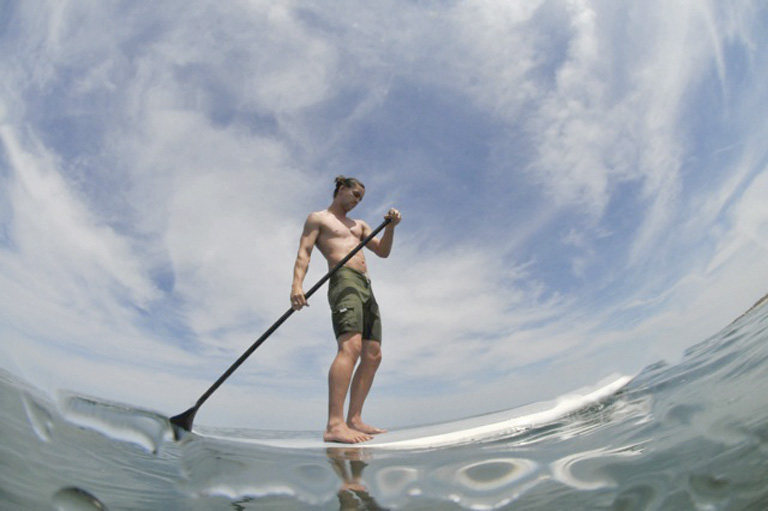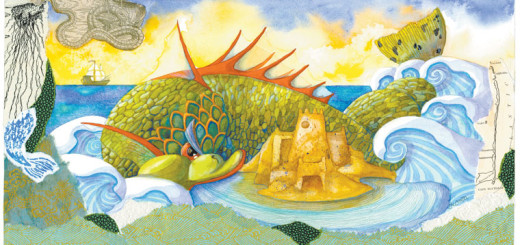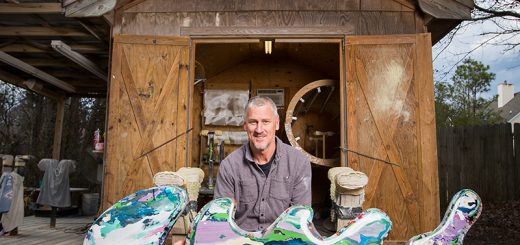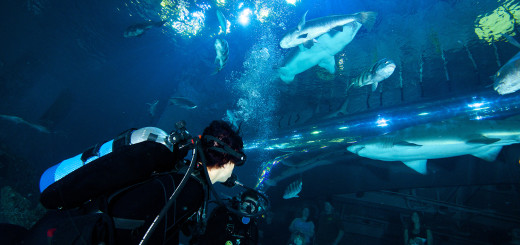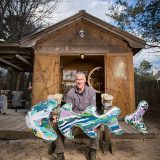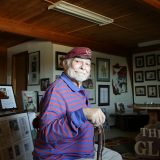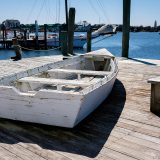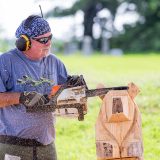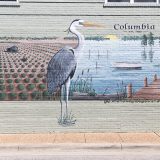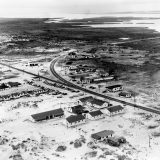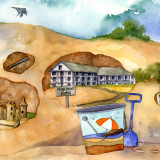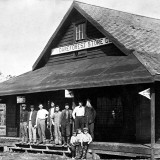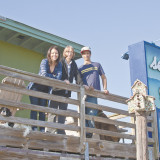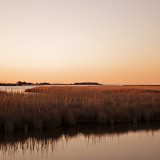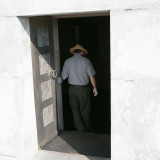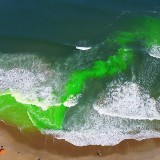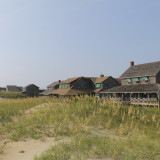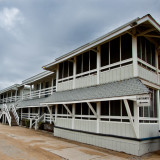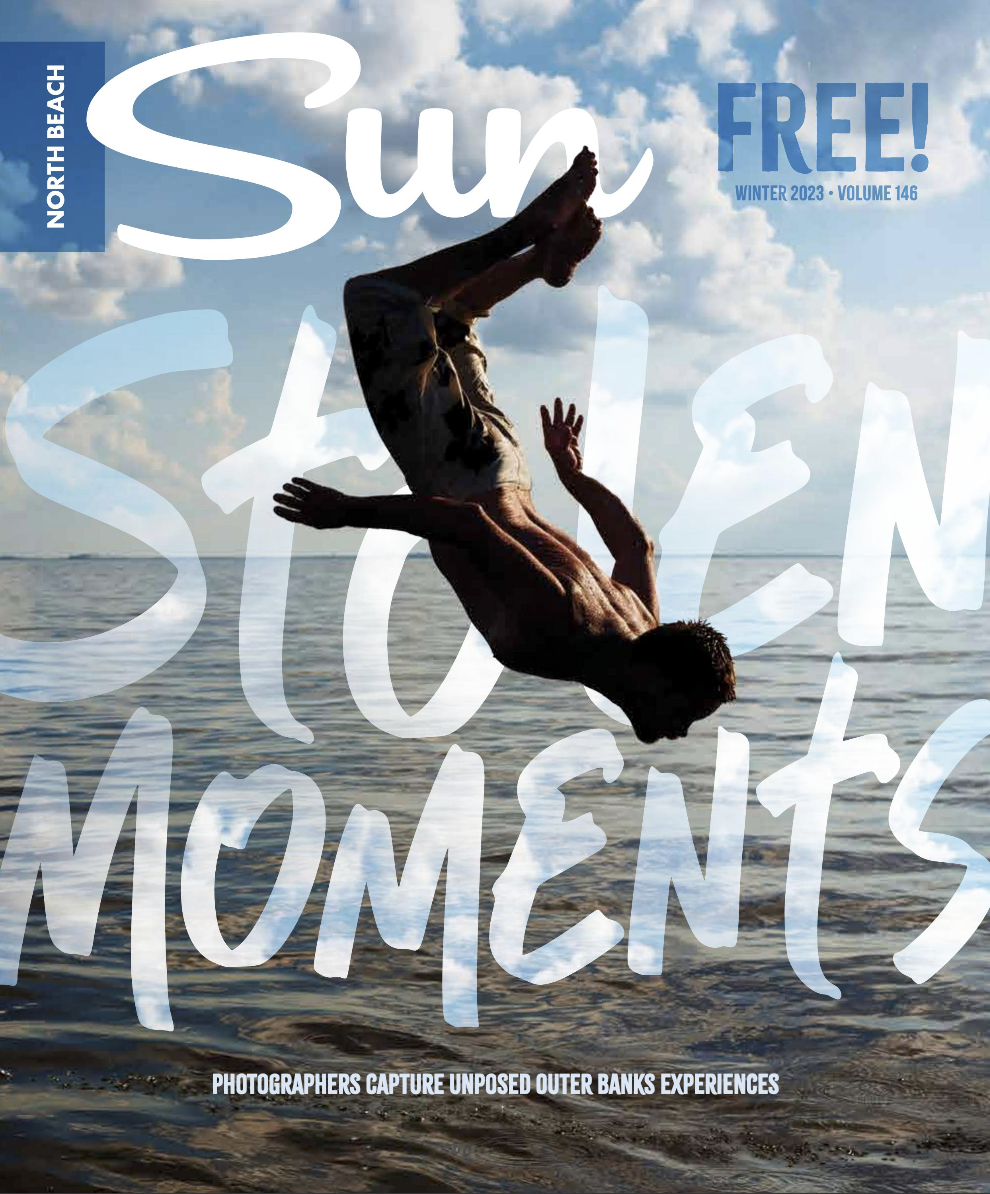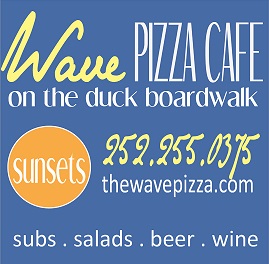More Fun on the Water with a Paddle
By Owen Hassell –
Paddleboading is simple. It takes a paddle, board, and any kind of water. The rest is an exciting adventure.
That’s the mindset of Jody Stowe, who teaches paddleboarding for her Sailor Jo Adventures business on Hatteras Island. She rents and sells boards, but also takes her paddling students on excursions through the various waterways of the island, learning more about the area while enjoying a sport.
“Once I started paddling through all the waterways of Hatteras, I saw places that I haven’t been,” Stowe said. “The reason I started doing paddling was for distance, because it was a very good meditative activity for me. I would start at Avon and paddle all the way to Hatteras Village, so around 12-13 miles.
“It’s something you can do alone and something with little equipment. All you need is a board and a paddle.”
The learning curve is minimal and the elements aren’t as much a barrier as they could be helpful. A family friendly option to other water sports, such as surfing and kiteboarding, after minimal instruction, it is possible to take all sorts of trips with paddleboarding.
Evan Foster, manager at Duck Village Outfitters, echoes Stowe’s beliefs about seeing so much more of the area, via ocean and sound, through paddleboarding.
“That’s the thing, is it’s a real easy learning curve and accessible to any waters,” Foster said. “With surfing, you have to have waves to surf. With stand up paddling — have water, can paddle.
“People are doing it on rivers, lakes, and the ocean of course. All types of water you can do this on and depending on the conditions, it can be beginner to advanced level stuff. There are guys paddling into some pretty big waves on these things, like 20-plus foot is not uncommon.”
Foster said paddleboarding has been around for ages, linked back to the early Hawaiians, but has surfaced more recently as a popular sport and activity. It carries the excitement of being on the water while at the same time being great exercise.
With such growing popularity, Foster added, his store has gone from two boards three summers ago to hosting 18 boards last summer to meet the demand. There are boards to match various skill levels, from a calm canal in Colington Harbour to rougher Atlantic Ocean waters.
“We live in a real ideal spot for this kind of sport,” Foster said. “The stand up paddleboarding in itself is basically learning your balance and learning your cadence with your paddling. That . . . means switching your hand to paddle and working on technique and stuff first, and then you can learn to ride waves with them. But with surfing, learning to catch the wave is a big thing, so the stand up paddle has more of an allure if someone wants to be on the water standing up.”
Stowe can work with all levels, but prefers ones who might have little water experience. It’s a building and bonding experience, learning first to kneel on the board until the right balance is attained. She has worked with people from the age of 7 to 70 and has had success with everyone.
Boards can range from $600 to $3,000 depending on condition as well as type of board, such as surfing, racing or touring, according to Stowe.
Injuries are lower, too, and the “cool” factor remains high. At least Stowe will assure it on one of her trips.
She has a board that’s equipped with a tied-down cooler for fishing, and has even taken people paddling up to decks at waterfront restaurants — since it beats sitting in road traffic.
“I actually went clamming on my 12-foot board last year,” Stowe said. “I was bored, so I put a clam rig on my board, and I had a backpack on. I paddled out a little south to Hatteras Inlet, and I know of some little islands there. I paddled for a few miles, tied my board to a bush, caught two dozen clams, put them in my backpack, paddled back and had them for dinner. It was one of the best days of my summer last year.”


